-
A CURIOUS DISCOVERY
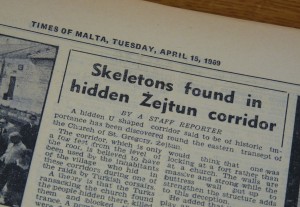 Skeletons found in hidden Żejtun corridor reported the Times of Malta on Tuesday, 15 April 1969. A photo of sacristan Ġann Marì Debono holding a skull in his hand accompanied the news of this remarkable discovery which up to this day is still shrouded in mystery and imbued with controversy.
Skeletons found in hidden Żejtun corridor reported the Times of Malta on Tuesday, 15 April 1969. A photo of sacristan Ġann Marì Debono holding a skull in his hand accompanied the news of this remarkable discovery which up to this day is still shrouded in mystery and imbued with controversy.I have been investigating and researching this find, often by interviewing persons who declared to have been involved in this discovery. My findings were discussed during a national symposium which was organized by Wirt iż-Żejtun in 2014 and later published in the book The Turkish Raid of 1614 which was issued by the same NGO.
 I never got the opportunity to talk to Ġann Marì Debono since he passed away in 2001, at the age of 78. Therefore, I accepted gladly the invitation of his eldest son Charles Debono who offered to share with me his father’s story.
I never got the opportunity to talk to Ġann Marì Debono since he passed away in 2001, at the age of 78. Therefore, I accepted gladly the invitation of his eldest son Charles Debono who offered to share with me his father’s story.“My grandmother had many children and so my father was brought up by his uncle Pawlu and his wife Beneditta Fenech. Pawlu was the sacristan of the parish church of St Catherine in Żejtun and he often took my father with him while he was at work. Soon, my father got very fond of this job and he gave a hand to his uncle whenever he could. Eventually, when Pawlu died, my father took over his duties and he became the new sacristan.”
Along the years, the old church of St Gregory which originally was the parish church of the village, had become neglected.
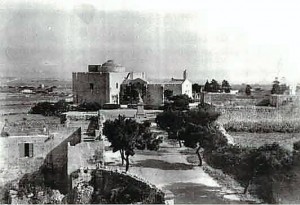 “There was nothing but a few farmhouses in the area. However, when a housing estate was built in proximity to this church, it made sense to revamp this building to provide service to the inhabitants who lived close by. Since my father was considering leaving his job at the parish church, Fr Ġwann Palmier, who was responsible for St Gregory’s church and also a friend of his, offered him a job there. Soon, my father was appointed as the sacristan of this church and together with Fr Palmier, they began to restore the place back to its glory.”
“There was nothing but a few farmhouses in the area. However, when a housing estate was built in proximity to this church, it made sense to revamp this building to provide service to the inhabitants who lived close by. Since my father was considering leaving his job at the parish church, Fr Ġwann Palmier, who was responsible for St Gregory’s church and also a friend of his, offered him a job there. Soon, my father was appointed as the sacristan of this church and together with Fr Palmier, they began to restore the place back to its glory.”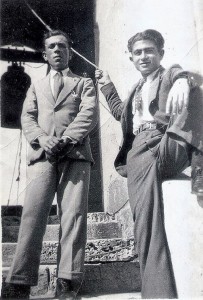 “My father was blessed with a curious nature and a strong determination. He had often listened to the rumours of the old villagers who insisted that there were some people that were buried around the dome of St Gregory’s church. He tried hard to locate this area, especially while doing maintenance work around the dome but he never succeeded.”
“My father was blessed with a curious nature and a strong determination. He had often listened to the rumours of the old villagers who insisted that there were some people that were buried around the dome of St Gregory’s church. He tried hard to locate this area, especially while doing maintenance work around the dome but he never succeeded.”Time would reveal that this was an impossible task since the human remains were actually buried around the roof and not around the dome.
“There was a raised stone close to the exit of the stairway’s room which led to the roof. My father often commented that it looked unusual and out of place. He was convinced that there was something beneath it. One day, there were some men doing maintenance work on the roof and he asked them to try to remove it.”
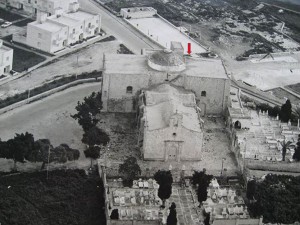 “Once the stone was removed, it was clear that it was covering an opening which led into the church. When my father entered into this space, he found his way to a small chamber which led to U-shaped passages that ran around the roof. Inside the corridors, he found several human remains. I remember him coming home on that day, full of excitement and telling us ‘I found them! I finally found them! I will take you to see them!’”
“Once the stone was removed, it was clear that it was covering an opening which led into the church. When my father entered into this space, he found his way to a small chamber which led to U-shaped passages that ran around the roof. Inside the corridors, he found several human remains. I remember him coming home on that day, full of excitement and telling us ‘I found them! I finally found them! I will take you to see them!’”When Charles visited the passages with his father, he noticed that the skeletons seemed to be lined up near each other along the corridors, as if someone had arranged them in that way. There was about 3 centimetres of dust which had collected in the corridors along the years during which the passages were blocked and closed away.
 Within this dust, a wooden shoe sole with a high heel, a small gilded wooden cross of Byzantine design, odd bits of a gilded wooden frame (perhaps an icon), three coins: two bronze with the cross of the Order, the other gold, but very worn out that it cannot be deciphered, pieces of pottery of the 16-17th century, fragments of animal bones, and a part of a chain mail armour vest, were discovered.
Within this dust, a wooden shoe sole with a high heel, a small gilded wooden cross of Byzantine design, odd bits of a gilded wooden frame (perhaps an icon), three coins: two bronze with the cross of the Order, the other gold, but very worn out that it cannot be deciphered, pieces of pottery of the 16-17th century, fragments of animal bones, and a part of a chain mail armour vest, were discovered.“My father found these passages in pitch darkness but soon he noticed that there were stones blocking five narrow loopholes in the thick walls. Once he removed these stones, he realized that three of them were pointing directly at St Thomas Bay and Marsascala while the other two looked out at Marsaxlokk and Birżebbuġa.”
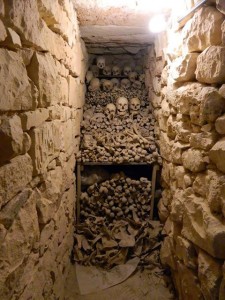 To avoid them being trodden, Debono picked up all the human bones and stacked them at the end of the third corridor. Yet the story does not end there….
To avoid them being trodden, Debono picked up all the human bones and stacked them at the end of the third corridor. Yet the story does not end there….“My father was sure that there was another entrance to these passages within the church itself. He pondered this idea and made several attempts to trace it out. Eventually he came upon a wall cupboard which was situated in an area along the winding staircase and seemed to be of no use. He decided to ask his friend Ġanni Vella, who was known as Ġanni l-ġgant (Ġanni the giant), to bring one of his mason’s tools; a huge iron nail with which building stones were kept in place. He knocked on the wall cupboard with this tool and suddenly, this feature moved out of the wall, revealing another entrance to these passages. It is from this entrance that people get in to view these passages nowadays.”
In 1978, paleopathological studies were done on these human remains by Seshadri Ramaswamy and Joseph Leslie Pace. These experts concluded that the bones appeared to have been exhumed from a cemetery and placed in the passages. However, others find this conclusion hard to believe and they insist that these remains possibly belong to a group of people who were trapped in these corridors whilst hiding there during an Ottoman attack on the village in 1614.
 Every Wednesday after Easter, the traditional feast of St Gregory is celebrated in this historical church in Żejtun. Probably few of those attending are aware of the secret passages and the human skeletons lying within.
Every Wednesday after Easter, the traditional feast of St Gregory is celebrated in this historical church in Żejtun. Probably few of those attending are aware of the secret passages and the human skeletons lying within.Considering that 49 years have passed from this discovery and that several scientific tools are now available to provide more conclusive results, including perhaps dna tests to trace family ancestry, isn’t it time to resolve this mystery by identifying who are these people and how they ended up in these passages?
(This feature was published in the Sunday Times of Malta issued on 25 March 2018)
Category: Times of Malta | Tags: Beneditta Fenech,Birżebbuga,Charles Debono,Easter,Fiona Vella,Fr Ġwann Palmier,Ġan Marì Debono,Ganni l-Ġgant,Ġanni Vella,Joseph Leslie Pace,Marsascala,Marsaxlokk,Pawlu Fenech,secret passages,Seshadri Ramaswamy,skeletons,St Gregory,St Thomas' Bay,The Turkish Raid of 1614,Wirt iz-Zejtun,Żejtun